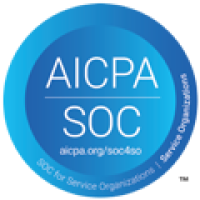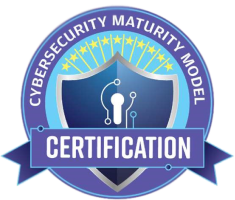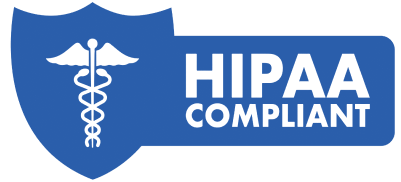
Machine‑learning projects often get stuck in experimentation and rarely make it to production. MLOps provides the missing framework that helps teams collaborate, automate, and deploy models responsibly. In this guide, we explore modern end‑to‑end MLOps architecture and workflow, incorporate industry‑tested best practices, and highlight how Clarifai’s platform can accelerate your journey.
What is end‑to‑end MLOps and how does it work?
End‑to‑end MLOps is the practice of orchestrating the entire machine‑learning lifecycle—from data ingestion and model training to deployment and monitoring—using repeatable pipelines and collaborative tooling. It involves data management, experiment tracking, automated CI/CD, model serving, and observability. It aligns cross‑functional stakeholders, streamlines compliance, and ensures that models deliver business value. Modern platforms such as Clarifai bring compute orchestration, scalable inference, and local runners to manage workloads across the lifecycle.
Why does it matter in 2025?
In 2025, AI adoption is mainstream, but governance and scalability remain challenging. Enterprises want reproducible models that can be retrained, redeployed, and monitored for fairness without skyrocketing costs. Generative AI introduces unique requirements around prompt management and retrieval‑augmented generation, while sustainability and ethical AI call for responsible operations. End‑to‑end MLOps addresses these needs with modular architectures, automation, and best practices.
Machine‑learning models cannot unlock their promised value if they sit on a data scientist’s laptop or break when new data arrives. MLOps—short for machine‑learning operations—integrates ML development with DevOps practices to solve exactly that problem. It offers a systematic way to build, deploy, monitor, and maintain models so they remain accurate and compliant throughout their lifecycle.
Beyond the baseline benefits, 2025 introduces unique drivers for robust MLOps:

To operate ML at scale, you need more than a training script. A comprehensive MLOps architecture typically contains five layers. Each plays a distinct role, yet they interconnect to form an end‑to‑end pipeline:
Using a modular architecture ensures each component can evolve independently. For example, you can switch feature store vendors without rewriting the training pipeline.

Implementing MLOps is a team sport. Roles and responsibilities must be clearly defined to avoid bottlenecks and misaligned incentives. A typical MLOps team includes:
Collaboration is critical: data scientists need reproducible datasets from data engineers, while ML engineers rely on DevOps to deploy models. Establishing feedback loops—from business metrics back to model training—keeps everyone aligned.

Having the right components is necessary but not sufficient; you need a repeatable workflow that orchestrates them. Here is an end‑to‑end blueprint:
Define the business problem, success metrics (e.g., accuracy, cost savings), and regulatory considerations. Align stakeholders and plan for data availability and compute requirements. Clarifai’s model catalog can help you evaluate existing models before building your own.
Collect data from various sources (databases, APIs, logs). Cleanse it, handle missing values, and engineer meaningful features. Use a feature store to version features and enable reuse across projects. Tools such as LakeFS or DVC ensure data versioning.
Split data into training/validation/test sets. Train multiple models using frameworks such as PyTorch, TensorFlow, or Clarifai’s training environment. Track experiments using an experiment tracker (e.g., MLflow) to record hyper‑parameters and metrics. AutoML tools can expedite this step.
Evaluate models against metrics like F1‑score or precision. Conduct cross‑validation, fairness tests, and risk assessments. Select the best model and register it in a model registry. Clarifai’s registry automatically versions models, making them easy to serve later.
Set up CI/CD pipelines that build containers, run unit tests, and validate data changes. Use continuous integration to test for issues and continuous delivery for deploying models to staging and production environments. Include canary deployments for safety.
Package the model into a container or deploy it via serverless endpoints. Clarifai’s compute orchestration simplifies scaling by dynamically allocating resources. Decide between real‑time inference (REST/gRPC) and batch processing.
Monitor performance metrics, system resource usage, and data drift. Create alerts for anomalies and automatically trigger retraining pipelines when metrics degrade. Clarifai’s monitoring tools allow you to set custom thresholds and integrate with popular observability platforms.
This workflow ensures your models remain accurate, compliant, and cost‑efficient. For example, Databricks used a similar pipeline to move models from development to production and re‑train them automatically when drift is detected.
While end‑to‑end pipelines share core stages, the way you structure them matters. Here are key patterns and principles:
A modular design divides the pipeline into reusable components—data processing, training, deployment, etc.—that can be swapped without impacting the entire system. This contrasts with monolithic systems where everything is tightly coupled. Modular approaches reduce resource consumption and deployment time.
Open‑source frameworks like Kubeflow or MLflow allow customization and transparency, while proprietary platforms offer turnkey experiences. Recent research advocates for unified, open‑source MLOps architectures to avoid lock‑in and black‑box solutions. Clarifai embraces open standards; you can export models in ONNX or manage pipelines via open APIs.
With IoT and real‑time applications, some inference must occur at the edge to reduce latency. Hybrid architectures run training in the cloud and inference on edge devices using lightweight runners. Clarifai’s local runners enable offline inference while synchronizing metadata with central servers.
Emerging research encourages self‑adaptation: pipelines monitor performance, analyze drift, plan improvements, and execute updates autonomously using a MAPE‑K loop. This approach ensures models adapt to changing environments while managing energy consumption and fairness.
Data privacy, role‑based access, and audit trails must be built into each component. Use encryption, secrets management, and compliance checks to protect sensitive information and maintain trust.
Selecting the right toolset can significantly affect speed, cost, and compliance. Below is an overview of key categories and leading tools (avoid competitor references by focusing on features):
Full‑stack platforms offer end‑to‑end functionality, from data ingestion to monitoring. They differ in automation levels, scalability, and integration:
Tools in this category record parameters, metrics, and artifacts for reproducibility:
Orchestrators manage the execution order of tasks and track their status. DAG‑based frameworks like Prefect and Kedro allow you to define pipelines as code. On the other hand, container‑native orchestrators (e.g., Kubeflow) run on Kubernetes clusters and handle resource scheduling. Clarifai integrates with Kubernetes and supports workflow templates to streamline deployment.
Tools like DVC or Pachyderm version datasets and pipeline runs, ensuring reproducibility and compliance. Feature stores also maintain versioned feature definitions and historical feature values for training and inference.
Feature stores centralize and serve features. Vector databases and retrieval engines, such as those powering retrieval‑augmented generation, handle high‑dimensional embeddings and allow semantic search. Clarifai’s vector search API provides out‑of‑the‑box embedding storage and retrieval, ideal for building RAG pipelines.
Testing tools evaluate performance, fairness, and drift before deployment. Monitoring tools track metrics in production and alert on anomalies. Consider both open‑source and commercial options; Clarifai’s built‑in monitoring integrates with your pipelines.
Serving frameworks can be serverless, containerized, or edge‑optimized. Clarifai’s model inference service abstracts away infrastructure, while local runners provide offline capabilities. Evaluate cost, throughput, and latency requirements when choosing.

Real‑world examples illustrate the tangible value of adopting MLOps practices.
A global agri‑tech start‑up needed to analyze drone imagery to detect crop diseases. By implementing a modular MLOps pipeline and using a feature store, they scaled data volume by 100× and halved time‑to‑production. Automated CI/CD ensured rapid iteration without sacrificing quality.
An environmental analytics firm reduced model development time by 90 % using a managed MLOps platform for experiment tracking and orchestration. This speed allowed them to respond quickly to changing forest conditions.
A manufacturing enterprise reduced deployment cycles from 12 months to 30–90 days with an MLOps platform that automated packaging, testing, and promotion. The business saw immediate ROI through faster predictive maintenance.
A healthcare network improved deployment time 6–12× while cutting costs by 50 % through an orchestrated ML platform. This allowed them to deploy models across hospitals and maintain consistent quality.
A leading real‑estate portal built an automated ML pipeline to price millions of homes. By involving solution architects and creating standardized feature pipelines, they improved prediction accuracy and shortened release cycles.
These examples show that investing in MLOps isn’t just about technology—it yields measurable business outcomes.
Deploying MLOps at scale presents technical, organizational, and ethical challenges. Understanding them helps you plan effectively.
Generative AI is one of the most transformative trends of our time. It introduces new operational challenges, leading to the birth of LLMOps—the practice of managing large language model workflows. Here’s what to expect:
Traditional ML pipelines revolve around labeled data. LLMOps pipelines focus on prompts, context retrieval, and reinforcement learning from human feedback. Prompt engineering and evaluation become critical. Tools like LangChain and vector databases manage unstructured textual data and enable retrieval‑augmented generation.
LLMs require large GPUs and specialized hardware. New orchestration strategies are needed to allocate resources efficiently and reduce costs. Techniques like model quantization, distillation, or usage of specialized chips help control expenditure.
Evaluating generative models is tricky. You must assess not just accuracy but also coherence, hallucination, and toxicity. Tools like Patronus AI and Clarifai’s content safety services offer automated evaluation and filtering.
LLMs amplify risk of misinformation, bias, and privacy breaches. LLMOps pipelines need strong guardrails, such as automated red‑teaming, content filtering, and ethical guidelines.
LLMOps doesn’t replace MLOps; rather, it extends it. You still need data ingestion, training, deployment, and monitoring. The difference lies in the nature of the data, evaluation metrics, and compute orchestration. Clarifai’s vector search and generative AI APIs help build retrieval‑augmented applications while inheriting the MLOps foundation.
As ML permeates society, it must align with ethical and environmental values. Sustainability in MLOps spans four dimensions:

The MLOps landscape is evolving rapidly. Key trends include:
To prepare:
In summary, end‑to‑end MLOps is essential for organizations that want to scale AI responsibly in 2025. By combining robust architecture, automation, compliance, and sustainability, you can deliver models that drive real business value while adhering to ethics and regulations. Clarifai’s integrated platform accelerates this journey, providing compute orchestration, model inference, local runners, and generative capabilities in one flexible environment. The future belongs to teams that operationalize AI effectively—start building yours today.
DevOps focuses on automating software development and deployment. MLOps extends these principles to machine learning, adding data management, model tracking, experimentation, and monitoring components. MLOps deals with unique challenges like data drift, model decay, and fairness.
While not always mandatory, feature stores provide a centralized way to define, version, and serve features across training and inference environments. They help maintain consistency, reduce duplication, and accelerate new model development.
Clarifai offers local runners that allow you to run models on local or edge devices without constant internet connectivity. When online, they synchronize metadata and performance metrics with the cloud, providing a seamless hybrid experience.
Metrics vary by use case but often include prediction accuracy, precision/recall, latency, throughput, resource utilization, data drift, and fairness scores. Set thresholds and alerting mechanisms to detect anomalies.
Use energy‑efficient hardware, optimize training schedules around renewable energy availability, implement self‑adapting pipelines, and ensure model re‑use. Open‑source tools and modular architectures help avoid waste and facilitate long‑term maintenance.
You can reuse core components (data ingestion, experiment tracking, deployment), but generative models require special handling for prompt management, vector retrieval, and evaluation metrics. Integrating generative‑specific tools into your pipeline is essential.
Not necessarily. Open‑source tools offer transparency and flexibility, while proprietary platforms provide convenience and support. Evaluate based on your team’s expertise, compliance requirements, and resource constraints. Clarifai combines the best of both, offering open APIs with enterprise support.
MLOps pipelines incorporate fairness testing and monitoring, allowing teams to measure and mitigate bias. Tools can evaluate models against protected classes and highlight disparities, while documentation ensures decisions are traceable.
MLOps is the bridge between AI innovation and real‑world impact. It combines technology, culture, and governance to transform experiments into reliable, ethical products. By following the architecture patterns, workflows, and best practices outlined here—and by leveraging platforms like Clarifai—you can build scalable, sustainable, and future‑proof AI solutions. Don’t let your models languish in notebooks—operationalize them and unlock their full potential.

Developer advocate specialized in Machine learning. Summanth work at Clarifai, where he helps developers to get the most out of their ML efforts. He usually writes about Compute orchestration, Computer vision and new trends on AI and technology.
Developer advocate specialized in Machine learning. Summanth work at Clarifai, where he helps developers to get the most out of their ML efforts. He usually writes about Compute orchestration, Computer vision and new trends on AI and technology.
© 2023 Clarifai, Inc. Terms of Service Content TakedownPrivacy Policy






© 2023 Clarifai, Inc. Terms of Service Content TakedownPrivacy Policy